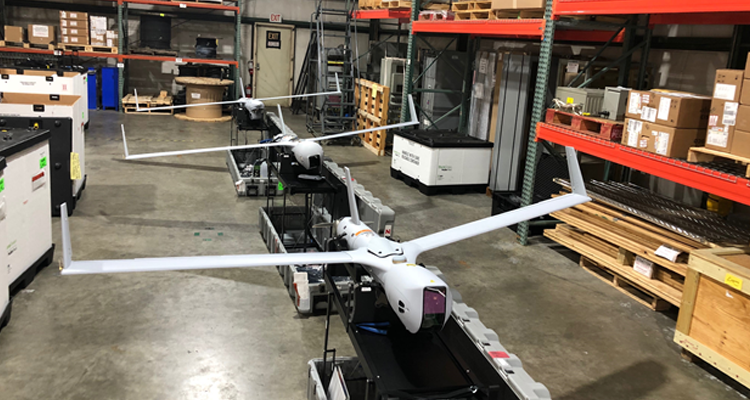Nov. 12, 2020 —

The unmanned aircraft sensor payload capability is varied based on the Coast Guard’s desired mission and search conditions: MWIR 3.5 is a mid-wave infrared for thermal imaging capability, for use at night or periods of low visibility; EO-900 is a high-definition telescopic electro-optical (EO) imager to zoom in on targets at greater distance; and ViDAR is a visual detection and ranging wide-area optical search system that is a comprehensive autonomous detection solutions for EO video. Courtesy Photo.
The Coast Guard small unmanned aircraft system for the national security cutter (NSC) program recently completed the system operation verification test for the unmanned aircraft system (UAS) installation on Coast Guard Cutter Bertholf, the sixth NSC to be equipped with UAS capability. This milestone is the latest in a series of key acquisition program activities to accelerate the scheduled for equipping the first eight NSCs with UAS capability. Installations underway on Coast Guard cutters Hamilton and Midgett have expected completions in January 2021 and March 2021, respectively.
Since the first installation, the UAS capability has completed more than 2,600 flight hours on 14 NSC patrols. Since their deployment, UAS platforms have supported 53 interdictions, assisted in the seizure of 48 tons of illicit narcotics worth over $1.2 billion and helped facilitate the capture of 132 narco-terrorists.
The UAS capability on the NSCs has also been used to:
- Provide real-time damage assessments of the Bahamas in the aftermath of Hurricane Dorian in September 2019. This event was the first time the Coast Guard used UAS overland for humanitarian relief efforts; the added surveillance capability allowed the service to focus recovery assets on emergent search and rescue and critical infrastructure needs.
- Aid a medical evacuation off a container ship in the Bering Sea, saving one life.
- Aid in a person-in-the-water search and rescue case off Hawaii in September. Work groups are underway to determine how to use UAS for search and rescue in the future.
- Identify more than 35 Chinese vessels illegally fishing by sorting through 150+ Automatic Identification System contacts in a fishing fleet off the coast of the Galapagos Islands.
The deployment of an UAS-enabled NSC and its comprehensive sensor suite packages can support day and night operations. UAS capability can conduct surveillance, detection, classification and identification of a wide range of targets, and is capable of up to 18+ hours of continuous flight time per day.
The Coast Guard is deploying a contractor-owned, contractor-operated solutions to provide UAS capability onboard the NSCs; the current contract includes options that could extend service through June 2026. The Coast Guard is also conducting preliminary efforts to explore the potential benefits of deploying UAS across several surface, and potentially land-based, platforms.
For more information: Unmanned Aircraft Systems program page